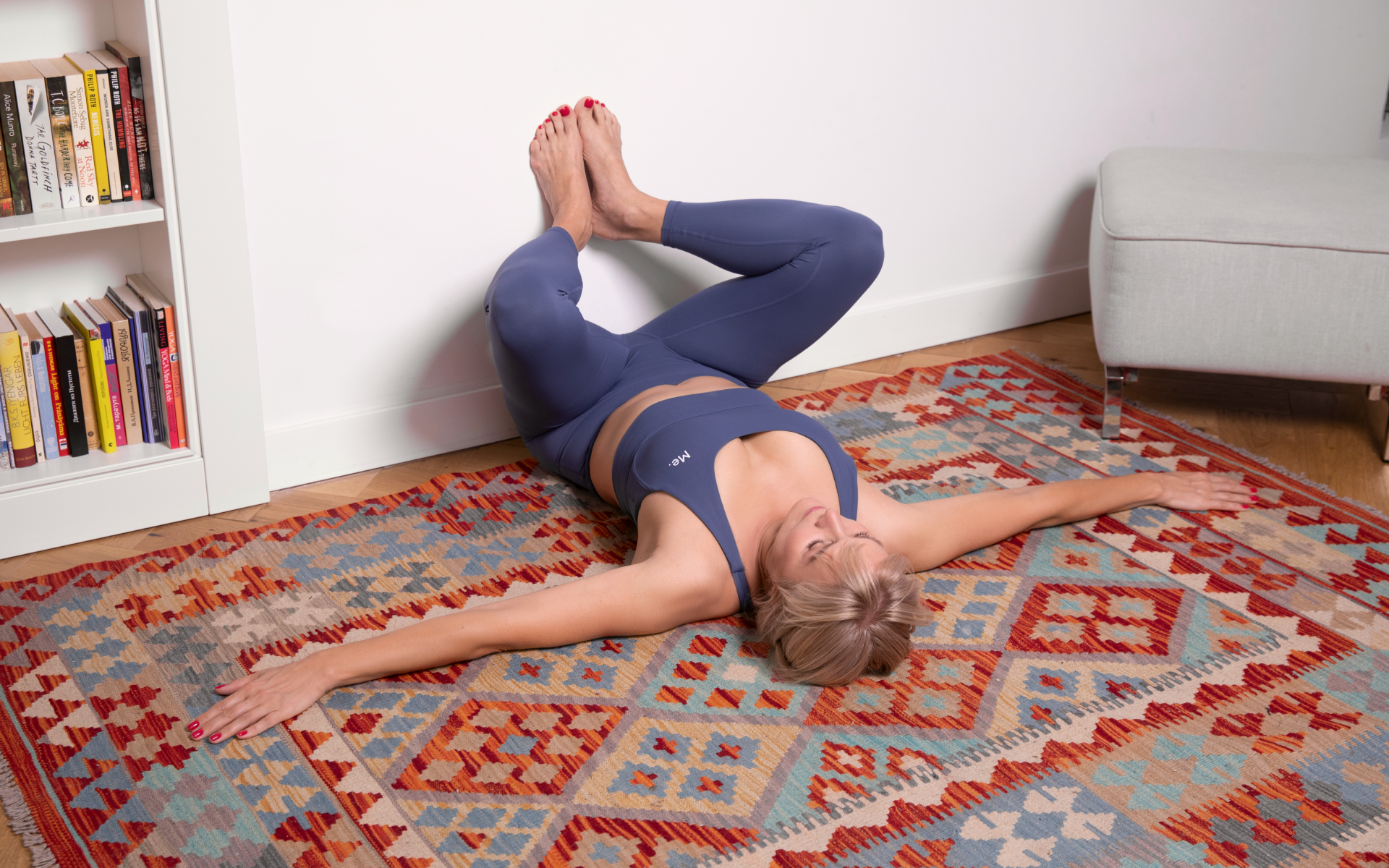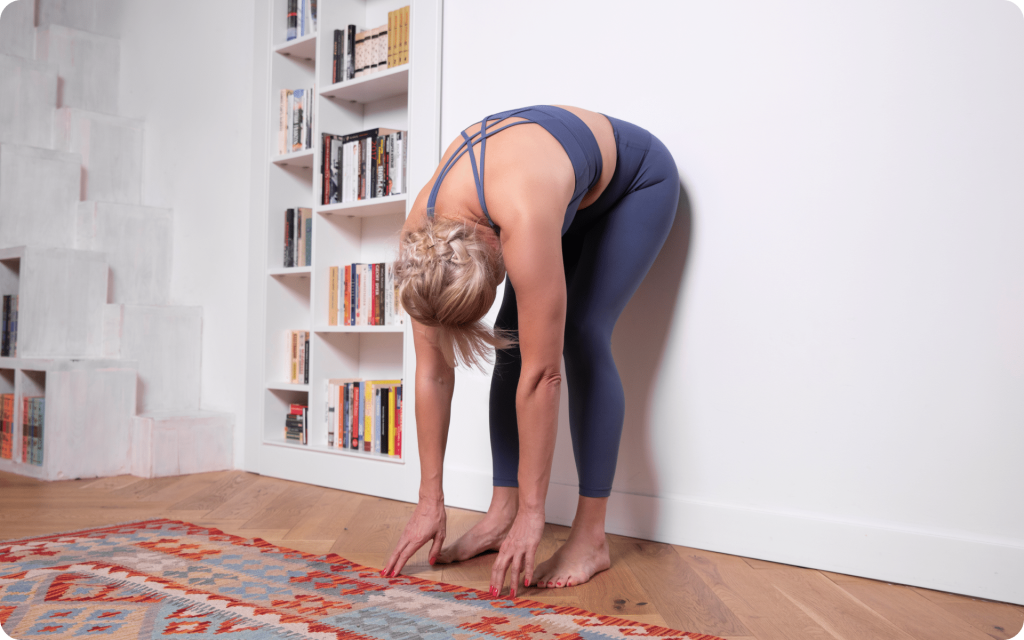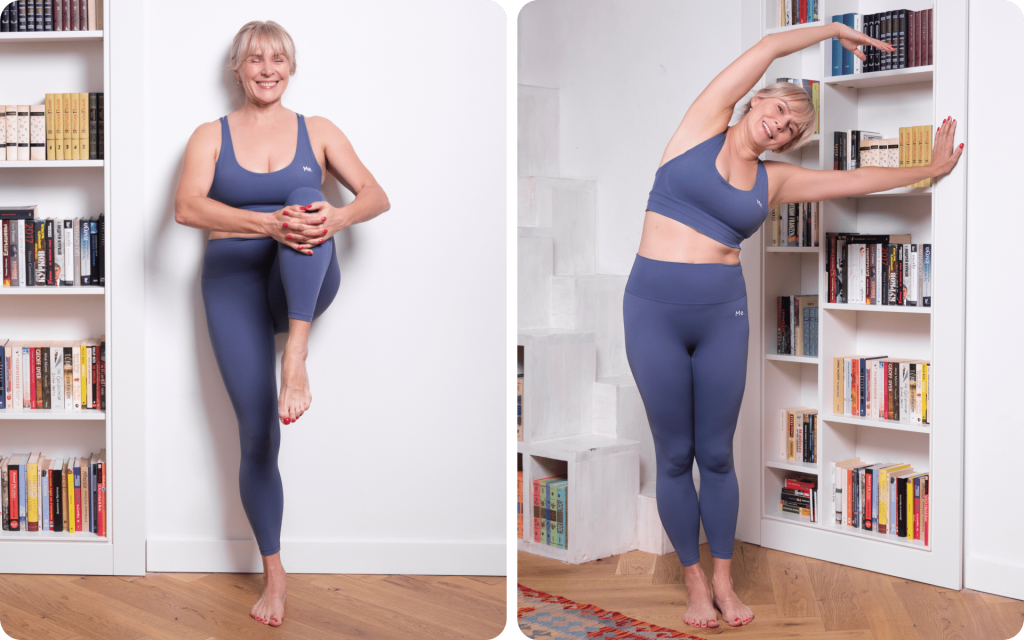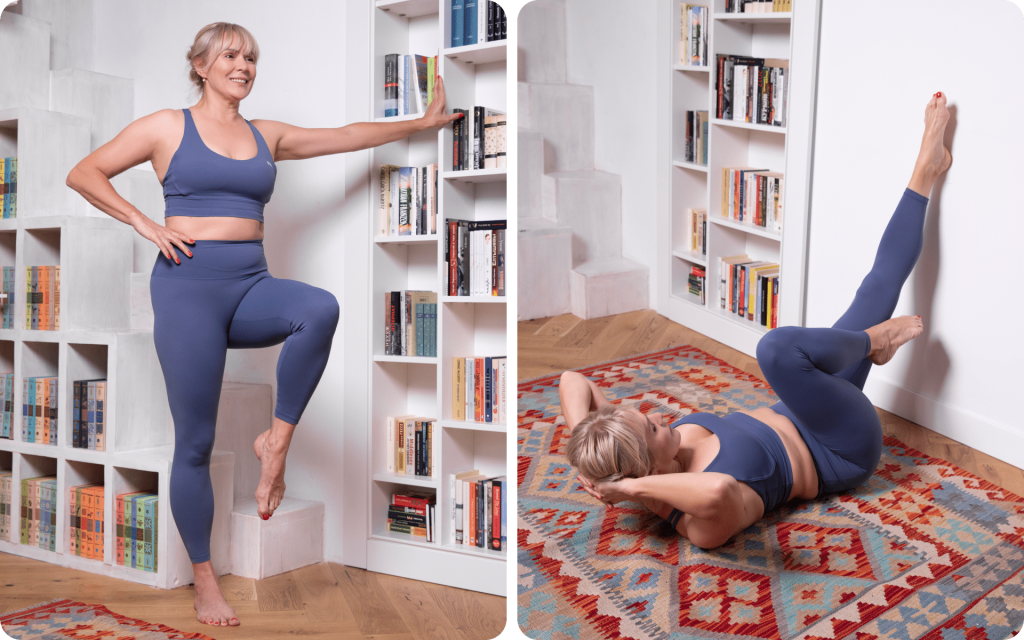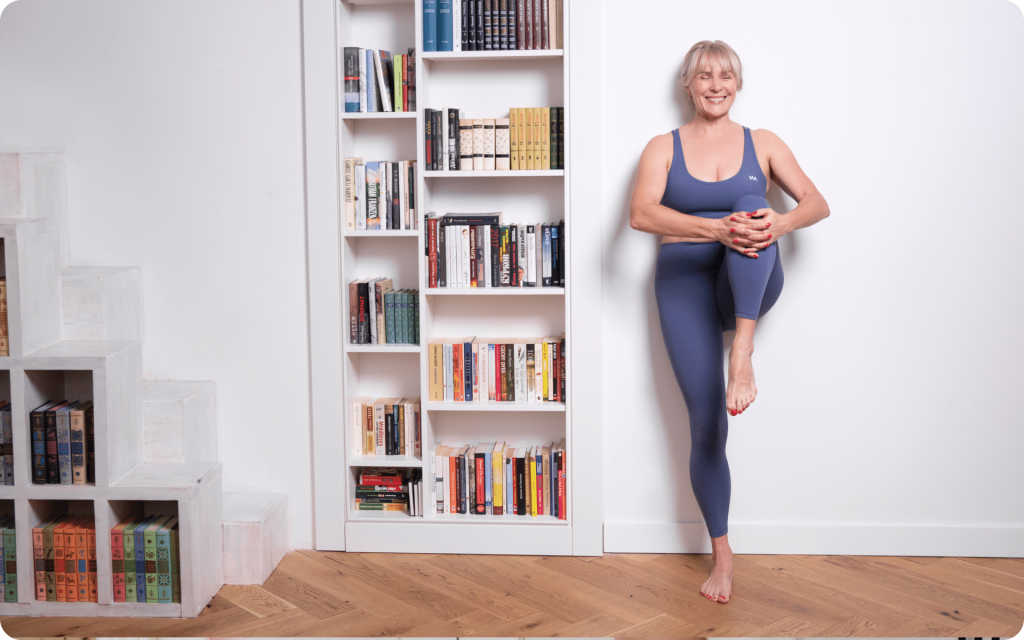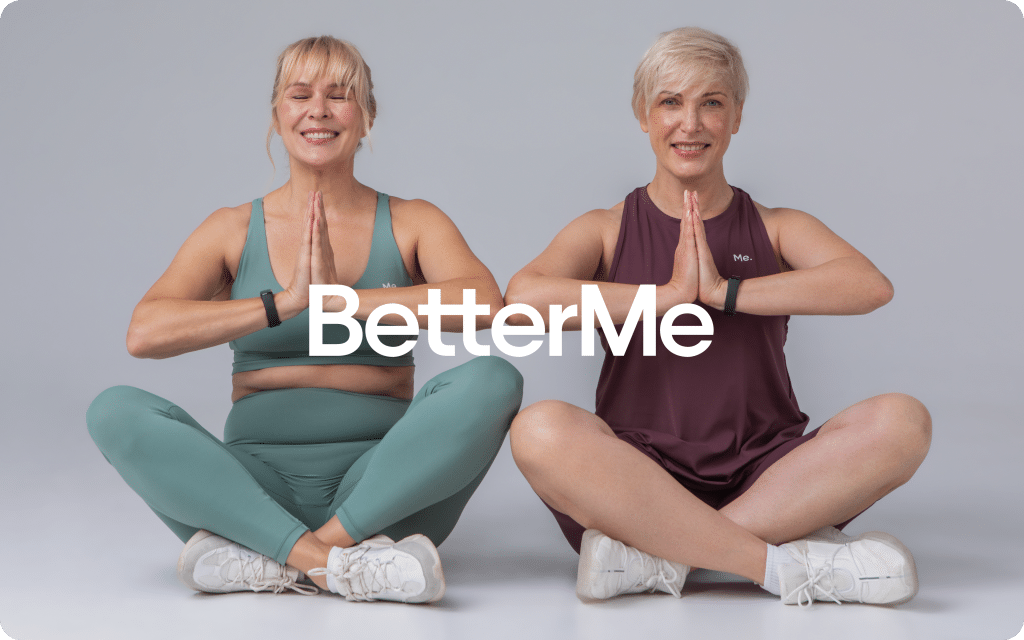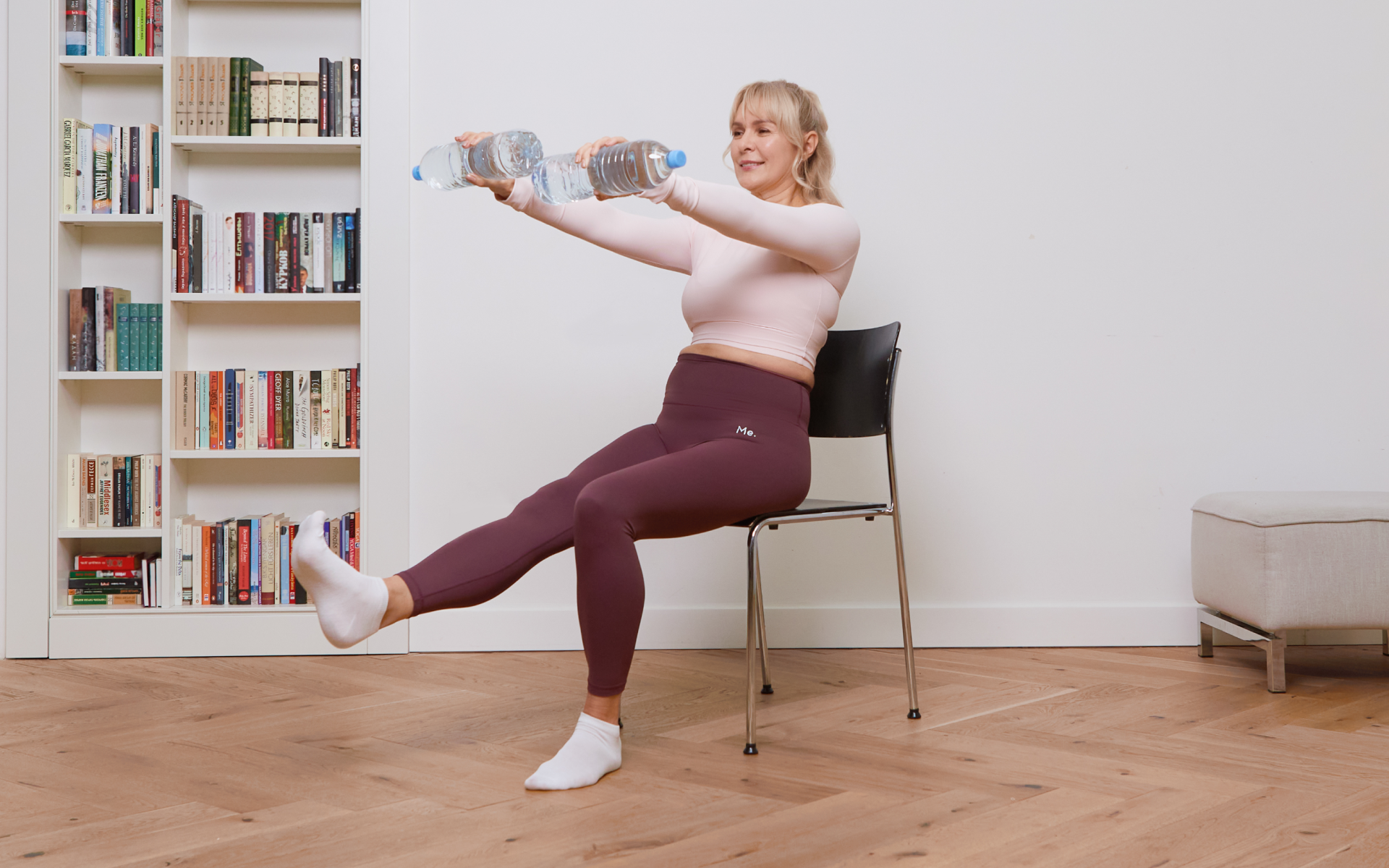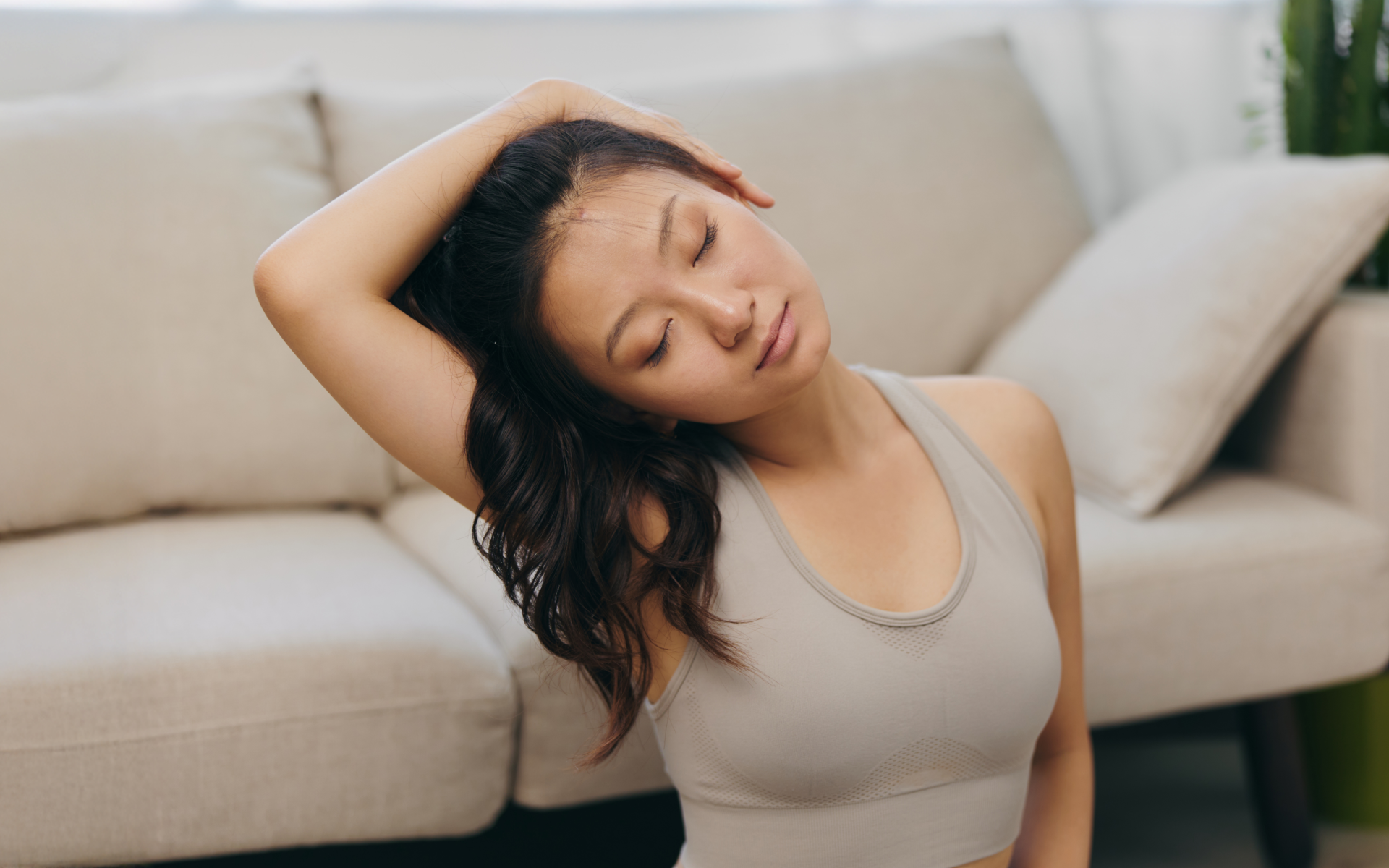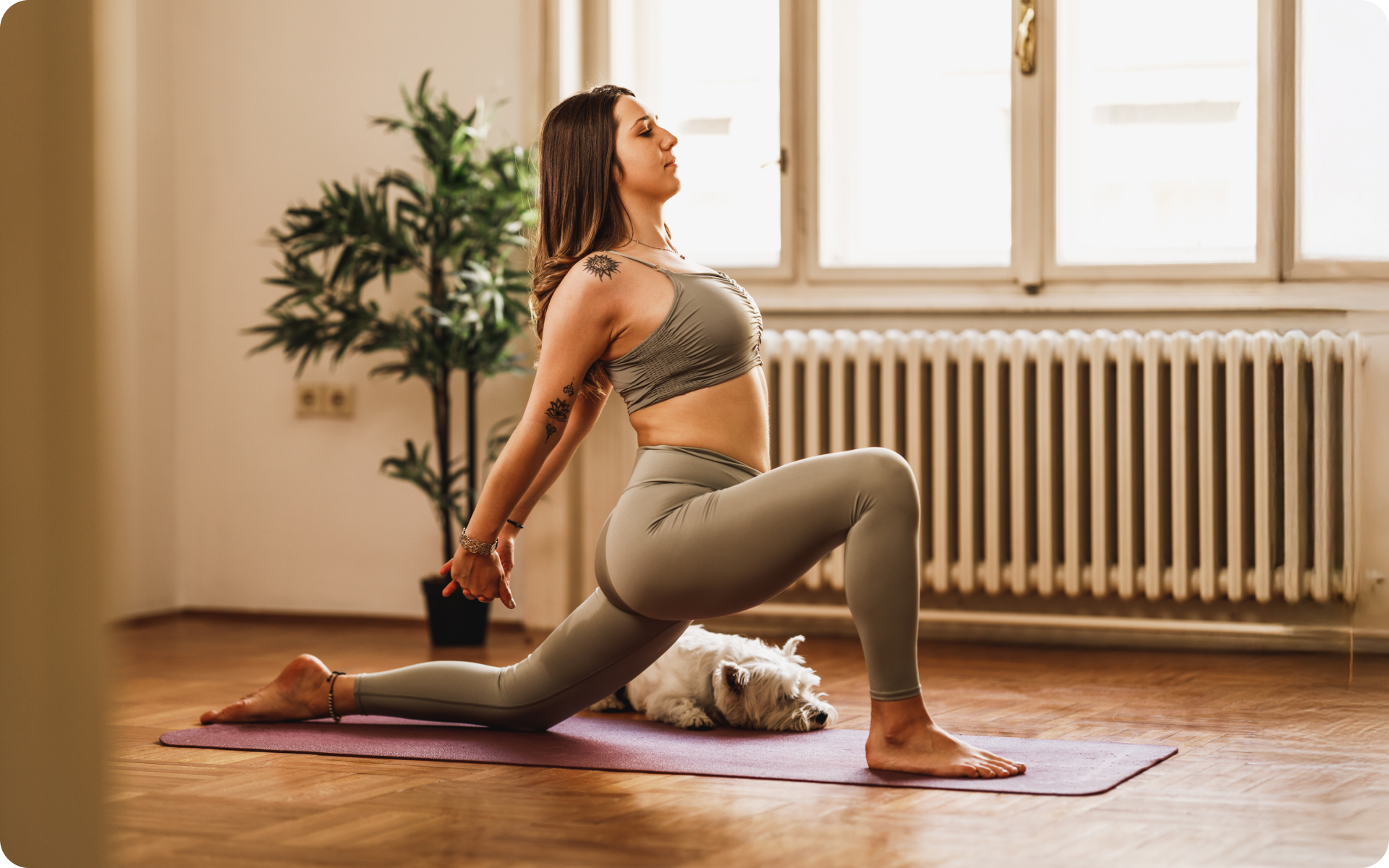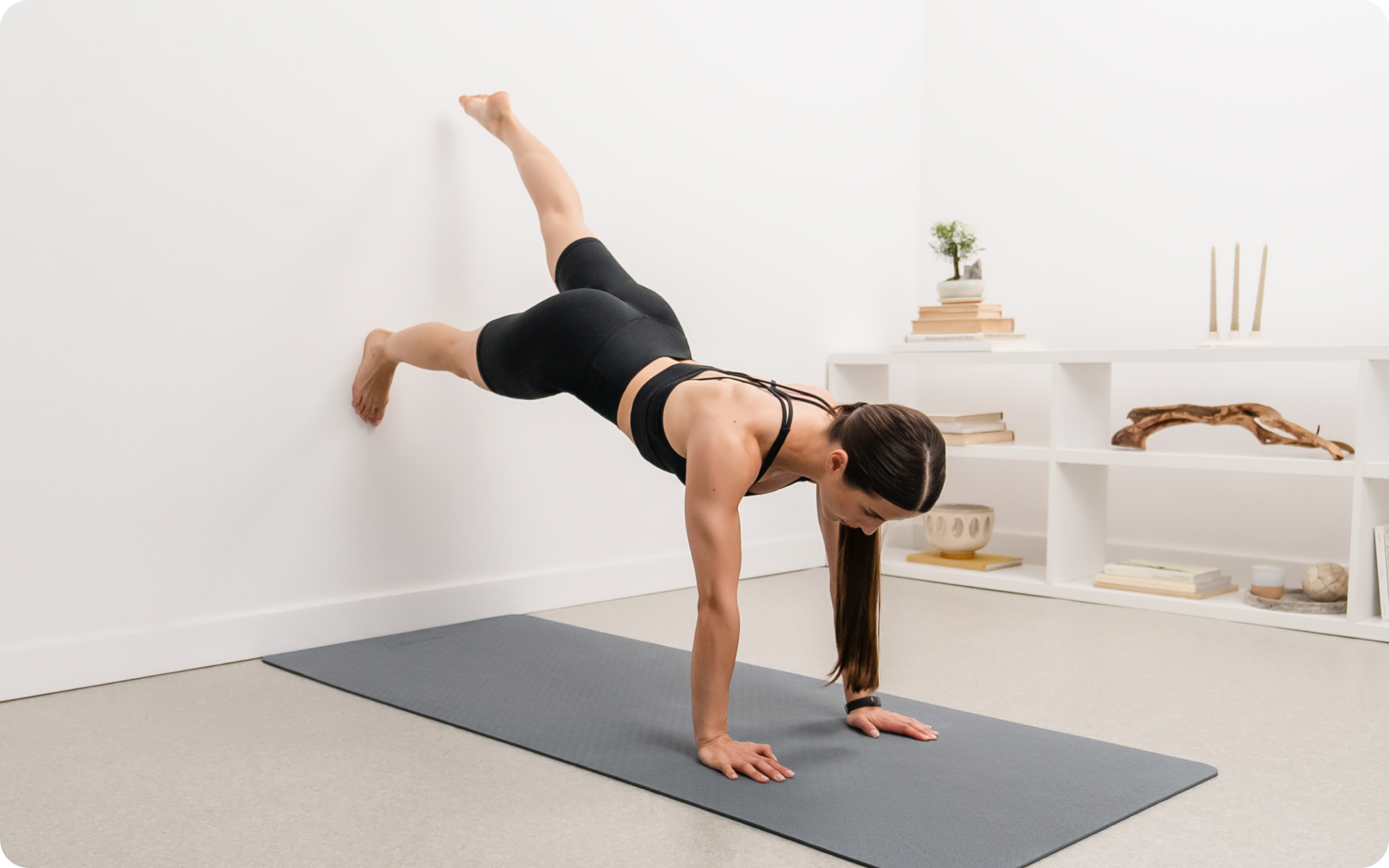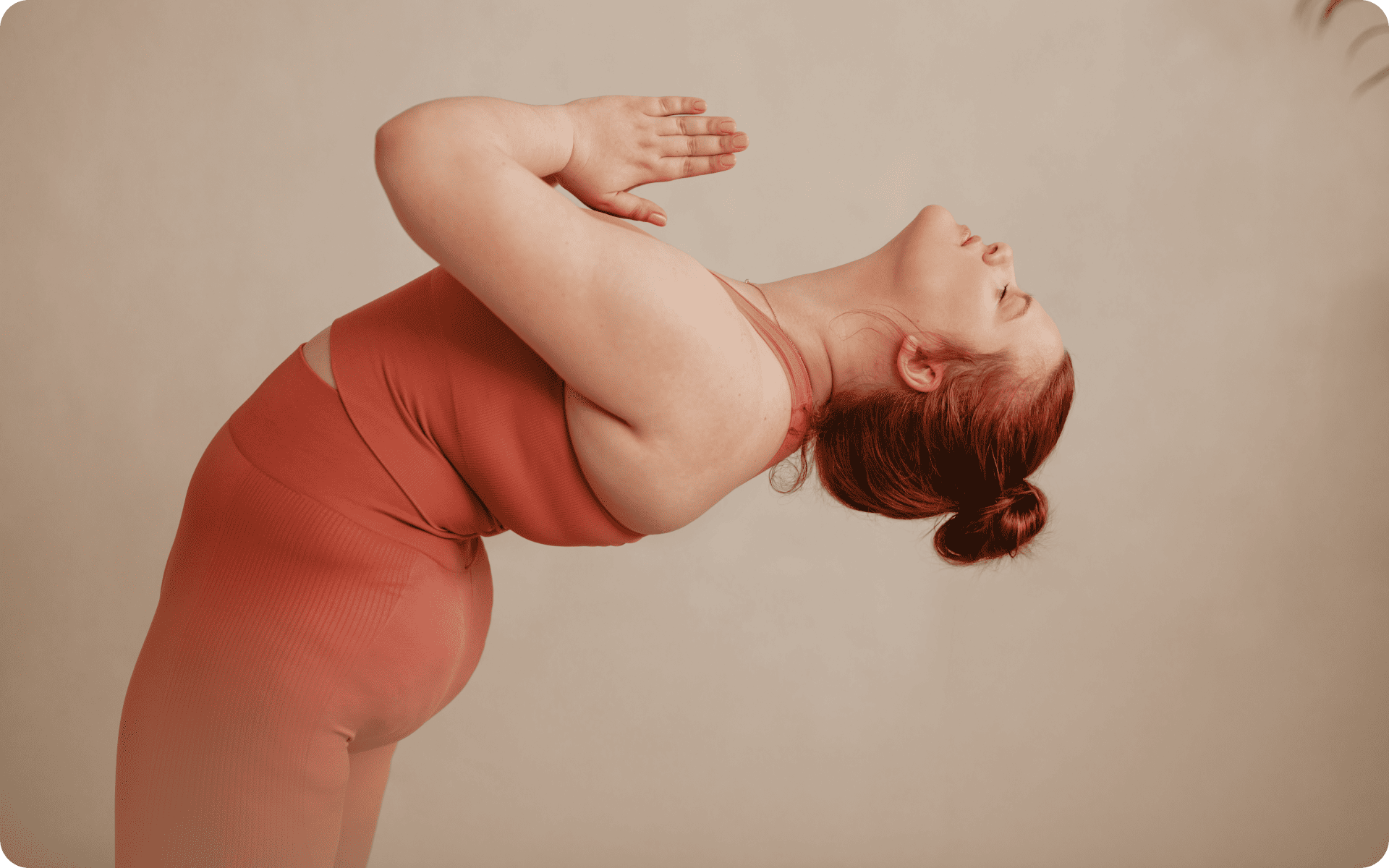Forget props and perfection, all you need is a wall and a plan. Sequence wall yoga poses aren’t just beginner-friendly, they’re a full-body reset disguised as simplicity. The wall doesn’t just hold you up, it teaches you how to move with intention, breathe with purpose, and feel what alignment actually means.
For those who are new to yoga, it builds confidence. For the seasoned, it sharpens control. Either way, it strips yoga back to what matters: awareness, strength, and calm.
In a world that pushes harder and faster, this practice asks you to pause, to listen, and to build something that lasts. Here’s everything you need to know about sequencing your wall yoga practice.
How Effective Is Wall Yoga?
Wall yoga is not just another wellness trend, it’s a well-grounded (pun intended) practice that offers some real physical and mental benefits.
But how effective is it, really? Let’s break it down in a way that’s easy to understand as well as backed by science.
- It builds awareness from the ground up
The support of the wall gives you something to lean on, quite literally!
This external point of reference helps your brain understand where your body is in space, also known as proprioception. With better proprioception, you move with more control and less guesswork (1).
This is where sequence wall yoga poses come in handy, particularly for beginners who are still learning to feel their way through a pose. You’re not just doing yoga, you’re learning how to feel grounded, stable, and supported.
- Alignment becomes easier to understand
The wall helps you monitor the positioning and placement of your spine, providing several benefits:
- The wall shows you when you’re overextending (hello, backbends that feel like too much).
- It helps keep your spine neutral and safe.
- Your knees, feet, and hips? They’ll start to talk to each other better.
That being said, wall yoga won’t magically fix posture issues overnight, but it will slowly train your body to recognize what “right” feels like.
- It reduces fear in tricky poses
Some poses such as standing splits or shoulder-supported bridges can feel intimidating. But when the wall is behind (or under) you, that fear eases (3). You know you won’t fall, or flop. And that confidence translates into deeper, safer stretches.
One misstep though: don’t rely on the wall forever. It’s a tool, not a crutch.
BetterMe: Health Coaching app helps you achieve your body goals with ease and efficiency by helping to choose proper meal plans and effective workouts. Start using our app and you will see good results in a short time.
Mental Benefits You Didn’t Expect
- It creates a calming, supported space
There’s something deeply soothing about pressing your back against a wall as it’s steady, unmoving, and somehow comforting.
With wall yoga, this sense of physical support can help you settle into stillness more easily. That stillness, combined with mindful breathing, is known to activate the parasympathetic nervous system, i.e. the part of your body that is responsible for rest and recovery (4).
In simple terms, you feel safer, your breath slows, and your body starts to calm itself.
One of the most well-known examples is the legs-up-the-wall pose (Viparita Karani), which research suggests can support deep relaxation and stress relief. Even a few minutes of this supported inversion may help lower tension and create a gentle, restorative effect.
- Wall-supported poses encourage slower, more conscious breathing
- This breath control helps regulate your nervous system
- As your body softens into the support, your mind often follows (5)
The sense of emotional steadiness that often comes from these poses isn’t guaranteed, but it does have a basis in how the nervous system responds to support and breath.
Read more: 5-Minute Chair Yoga for Seniors: Science-Backed Moves to Boost Daily Activity
What Are Some Beginner-Friendly Wall Yoga Poses?
If you’re new to yoga or just easing back into movement, wall yoga can be the perfect starting point. The wall acts as a:
- Guide
- Balance buddy
- Checkpoint for alignment
The best part? You don’t need to be flexible, strong, or “good” at yoga to get started. This sequence of wall yoga poses is beginner‑friendly, grounding, and effective.
1. Legs-up-the-Wall Pose (Viparita Karani)
This one’s a classic and for good reason!
- Lie down on your back with your legs extended straight up the wall.
- Rest your arms by your sides with your palms facing up.
- Close your eyes. Stay for 3-5 minutes.
This pose helps reduce tension in the legs and lower back (2). It also promotes relaxation by calming your breath and giving your heart rate a gentle nudge downward.
One of the most effective wall yoga poses for beginners – simple, sweet, and soothing!
2. Wall-Assisted Forward Fold
- Stand a foot away from the wall with your back facing it.
- Hinge forward at the hips and rest your back against the wall as you fold.
- Bend your knees slightly to reduce hamstring strain.
This pose is great for opening up the spine and calming the nervous system (6). The wall adds just enough support to make folding feel less like tipping over.
3. Standing Wall Cat-Cow
- Face the wall with your arms stretched out in front of you and your palms pressed into the surface.
- Inhale: arch your back slightly with your chest toward the wall.
- Exhale: round your spine, drawing your belly inward.
Cat-cow at the wall helps introduce gentle spinal mobility with less strain on the wrists or knees.
4. Wall Downward Dog
This one can take a little adjusting, but it’s worth it.
- Place your hands shoulder-width apart on the wall at hip height.
- Walk your feet back until your torso is parallel to the floor.
- Let your head hang gently between your arms.
While it hasn’t been clinically studied, the wall variation of downward dog is commonly used to reduce wrist discomfort and support alignment, offering many of the same mobility benefits as the traditional version.
5. Wall Warrior II
- Stand with your back heel touching the base of the wall.
- Your front foot should point forward with your front knee bent at 90 degrees.
- Raise your arms shoulder-height and gaze forward.
This pose strengthens the legs and opens the hips, while the wall keeps your posture steady – perfect for learning to balance strength with softness.
Each of these yoga wall poses for beginners can be part of a gentle wall yoga sequence, whether you’re recovering from stiffness, managing low energy, or just want to try something different, as they are welcoming, accessible starting points.
Why Is Sequencing Important in Yoga?
You’ve probably heard yoga teachers say things like “follow the sequence” or “honor the order of the poses.” And honestly? They’re not just trying to sound wise or mystical.
In yoga, how you put poses together matters just as much as what you’re doing. Particularly when it comes to sequence wall yoga poses, a thoughtful order can turn a random stretch into a real, balanced experience for your body and mind (7).
It prepares the body safely
Think of sequencing like a warm-up playlist for your muscles and joints.
- You wouldn’t jump into a sprint without walking first. The same goes for yoga.
- Proper sequences ease the body in, increase circulation, and reduce the risk of injury(7).
- In wall yoga, starting with gentle reclined poses can help you feel grounded before you add standing postures.
If you start too intensely, too fast, you’ll feel it the next day – in a not-so-good way.
Sequencing supports the nervous system
Yoga isn’t just about muscles, it’s also about your brain and nerves. A well-sequenced practice:
- Starts with energy-building or active poses
- Moves into balancing and lengthening
- Ends with calming, restorative shapes
This flow helps regulate your nervous system. It gives you a boost when you need it, and calms you when you’re winding down (7).
It helps you track your progress
Repeating a smart sequence over time gives your body a reference point. You notice:
- “Hey, my hips feel looser this week.”
- “I’m not leaning on the wall as much today.”
- “I held that shape longer than last time.”
And that’s real progress – not just in flexibility or strength, but in awareness. Sequence wall yoga poses give beginners a chance to build this awareness in a structured, safe, and repeatable way.
That being said, don’t get too rigid. Bodies change daily, and so should your sequence sometimes.
Read more: Seated Yoga for Seniors: 8 Gentle Exercises to Restore Mind and Body
How to Sequence Wall Yoga Poses as a Beginner
Creating your own wall yoga flow doesn’t have to be confusing. You don’t need to memorize Sanskrit pose names or follow complicated charts.
What you do need is a sense of rhythm, and a few key guidelines that help your body move safely and meaningfully. This is where sequencing comes in.
When it’s done right, a wall yoga sequence flows like a conversation between your muscles, breath, and nervous system. When it’s done randomly, it just feels like a bunch of moves mashed together.
So let’s break it down.
Start with the warm-up (and don’t skip it)
No matter how flexible you are, your body still needs time to ease in. Cold muscles don’t like sudden demands.
Start with:
- Legs-up-the-Wall – helps blood circulation and relaxes tight legs
- Wall Cat-Cow – gently mobilizes the spine without going to the floor
- Seated Wall Forward Fold – opens the backline of the body gradually
These gentle poses prep you for deeper movements later. Without this? The chances of pulling something or feeling stiff mid-practice go way up.
Follow the rule: Simple before complex
In yoga, and especially with sequence wall yoga poses for beginners, it’s always best to start simple (8).
Start with grounded poses, then work your way up to standing shapes.
- Wall Warrior II – builds strength in the legs and teaches alignment
- Wall Lunge – opens the hips while teaching control
- Wall Chair Pose – fires up your thighs and glutes
You’d never be able to start with handstands on Day 1. This is the same idea. Ease in, build confidence, and gradually increase complexity.
Balance both sides and all movements
One thing new practitioners sometimes forget is balance – not just left and right, but front and back, push and pull.
If you’re folding forward, include a gentle backbend later. If you do warrior II on one side, repeat it on the other.
This keeps your muscles balanced and avoids the kind of tightness that builds up when one group is overworked. Otherwise, you’ll feel great on one side and kind of off on the other, and it happens more often than you’d think.
Mind your spine
The spine is the center of everything in yoga. So it deserves some attention, not just random movements.
Try to include movements in all directions:
- Forward folds
- Gentle twists
- Backbends
- Lateral (side-bending) shapes
But here’s the thing: don’t follow deep backbends with intense twists. Your spine needs neutral time between those moves, like a reset. Wall cat-cow or simply standing tall against the wall can help neutralize the tension.
Use transitions that feel kind
Jumping from standing poses to full rest without a middle ground can feel jarring. Your body benefits from pacing.
- After a wall lunge, try a half fold at the wall
- Before rest, do a calming wall butterfly pose
This gives your nervous system a chance to downshift gradually, which makes the final rest much more effective. Skipping this step? You may feel a little buzzy instead of relaxed.
End with cooling, easy poses
Rest isn’t optional – it’s where the body processes the whole sequence, physically and mentally. In yoga, it’s known as integration (8).
Try these:
- Wall Butterfly – opens hips and settles the breath
- Wall Savasana – legs supported on the wall, eyes closed
Even 5 minutes here can change how your body responds to the entire practice. The wall offers both physical and emotional support.
A few quick tips for building your own sequence:
- Use a wall yoga app or printed list to keep things flowing until it’s second nature
- Stick with the same sequence for 1-2 weeks, as it helps your body recognize patterns
- Don’t force your body into shapes that don’t feel right
Sequence wall yoga poses are about listening to your body, not overpowering it. And that’s the beauty of it – you get stronger, calmer, and more aware not just from the poses, but from the way they’re arranged. That order? It makes all the difference.
How Do I Memorize My Wall Yoga Sequence?
When you’re first getting into wall yoga, or any kind of yoga, it’s totally normal to forget what comes next. You’re in a pose, breathing deeply, and then… blank. Was it wall lunge next? Or wall warrior II?
Memorizing sequence wall yoga poses doesn’t have to feel like studying for an exam – it can actually become part of your practice.
Break your sequence into small chunks
Trying to remember the entire flow all at once can be overwhelming, particularly if you’re new. Instead:
- Think in sections: warm-up, standing strength, and cool-down.
- Memorize 2–3 poses per section before moving on.
- Repeat that section daily until it sticks.
Eventually, it becomes muscle memory. And then you won’t even have to think about it – you’ll just move.
Visual cues help more than you think
Post a printed list of your sequence on the wall next to your mat, or write it down in your notes app. You can even sketch little stick figures – it doesn’t need to be fancy.
You’ll be surprised by how just seeing the names while you move helps build recall faster.
Reasons why BetterMe is a safe bet: a wide range of calorie-blasting workouts, finger-licking recipes, 24/7 support, challenges that’ll keep you on your best game, and that just scratches the surface! Start using our app and watch the magic happen.
Use a wall yoga app or follow along with video
If you’re more of a visual learner, use a guided wall yoga app that lets you pause, rewind, or slow down the pace. Watching and mimicking helps cement the sequence in your brain. It’s like dance – you learn by doing it over and over again.
Be careful not to rely on it too heavily, though. The goal is to feel it in your body, not just to follow someone else’s pace forever.
Repeat the same sequence for a week
Repetition builds retention. Try committing to one wall yoga sequence for 5-7 days in a row. You’ll notice:
- The poses start to flow without thought
- Transitions become smoother
- Your body begins to anticipate the next movement
If you change it up every day, your brain doesn’t get a chance to build those mental connections. And then it stays “new” longer than it needs to.
That being said, don’t force it if it’s not clicking. Some days are off and it happens. Let go of needing it to be perfect and just show up.
Anchor it to your breath
One of the simplest ways to memorize a sequence? Connect each pose or transition to your breath.
- Inhale: Rise into warrior
- Exhale: Sink deeper
- Inhale: Shift into lunge
- Exhale: Fold
When your breath leads the way, your memory doesn’t have to work as hard. The rhythm becomes your roadmap.
Is It OK to Do the Same Yoga Sequence Every Day?
The short answer? Yes, but there’s a little more to it than just a green light. Repeating the same sequence of wall yoga poses daily can be grounding, comforting, and even beneficial. However, like anything else, it depends on how you’re doing it, why you’re doing it, and how your body feels while you’re doing it.
Let’s break down the benefits and the cautions.
- Consistency builds confidence
Doing the same poses regularly helps your body learn faster.
- Movements become second nature
- Transitions feel smoother
- You notice improvements in balance, breath, and control
This is particularly helpful if you’re practicing sequence wall yoga poses for beginners. Repetition allows new practitioners to develop body awareness without constantly having to think, “Wait, what’s next?”
But it can also make you tune out if you’re not being mindful, which leads to the next point.
- The risk of going on autopilot
Doing the same sequence without paying attention can dull its effect over time. You start just “going through the motions” and lose the depth of the practice.
It’s kind of like brushing your teeth. You’re performing the action, but are you really there? If you notice yourself zoning out or moving without breath connection, it may be time to switch things up or slow it down.
- Listen to your body – it will tell you
If your hamstrings feel sore, your balance is off, or you’re dragging yourself into the same poses with resistance, it’s probably a sign to pause or pivot. One day the wall lunge might feel great, but the next day, it might not, and that’s normal.
Repeating the same yoga wall exercises isn’t harmful in itself, it’s ignoring your body that creates the problem. Check in often.
Some ways to keep your sequence fresh:
- Adjust the pace – either slow it down or hold poses for longer
- Change the music or breath count
- Swap just one pose for a different variation
Daily yoga works when it meets you where you are, not when it forces you into a rigid shape every time.
So, is it okay?
Yes. In fact, some of the most effective yoga sequences for beginners are repeated for weeks at a time. Just keep it conscious, keep it kind, and don’t be afraid to rest or change direction when your body doesn’t cooperate!
What Should You Not Do in a Wall Yoga Sequence?
Wall yoga may feel safer (and often is), but that doesn’t mean it’s completely risk-free. Just because you’re supported doesn’t mean you should push your body past its limit. A mindful approach is always the key, particularly when you’re creating your own flow.
- Don’t rush through the setup
Wall yoga relies on proper positioning. If your feet are too close or your back isn’t aligned with the wall, the pose can feel awkward or strain the wrong areas.
Take a few extra seconds to adjust. It’s worth it.
- Don’t skip the warm-up (especially for seniors)
For older adults, joint stiffness or lower back sensitivity can make sudden movement uncomfortable or worse, harmful. Sequence wall yoga poses for seniors should always begin with slow, supported stretches such as wall butterfly or legs-up-the-wall to ease the body in.
- Don’t force flexibility
Using the wall doesn’t mean you must reach deeper. Respect your limits. Even wall yoga poses for beginners can be intense if you’re not breathing properly or you’re overreaching.
Think of the wall as a support, not a challenge.
- Don’t ignore transitions
Jumping between poses without mindful transitions can disrupt your flow and your nervous system. Move slowly and with intention, particularly when shifting from standing to reclining positions.
Wall yoga isn’t high-impact, but it can support weight loss by building strength, improving metabolism, and reducing stress-related habits when it’s done consistently with breath awareness. You can practice wall yoga 3-5 times a week, even daily, as long as you listen to your body and take rest when needed. A great first move is legs-up-the-wall, which supports circulation, calms the nervous system, and helps you connect with your breath. Yes, particularly for beginners or those who are recovering from stiffness or fatigue. It improves flexibility, balance, and strength gently, which makes it a smart choice for long-term wellness.Frequently Asked Questions
Does wall yoga really work for weight loss?
How often should I do wall yoga?
What is the first yoga move to learn?
Is wall yoga good enough exercise?
The Bottom Line
Wall yoga is more than just a modification, it’s a full-body, full-mind experience. With just a wall and a little space, sequence wall yoga poses offer strength, support, and stillness all in one. Whether you’re brand new or getting back into your practice, the wall gives you structure without pressure. From wall yoga poses for beginners to more tailored sequence wall yoga poses for seniors, there’s a flow that meets you exactly where you are.
Consistency, breath, and smart sequencing are what turn a few poses into a healing routine. Use the wall as your guide. And when you need a little help? A simple handwritten sequence can help you stay focused. Above all, keep it kind. Keep it curious. Let your wall yoga practice evolve with you, day by day, pose by pose.
DISCLAIMER:
This article is intended for general informational purposes only and does not serve to address individual circumstances. It is not a substitute for professional advice or help and should not be relied on for making any kind of decision-making. Any action taken as a direct or indirect result of the information in this article is entirely at your own risk and is your sole responsibility.
BetterMe, its content staff, and its medical advisors accept no responsibility for inaccuracies, errors, misstatements, inconsistencies, or omissions and specifically disclaim any liability, loss or risk, personal, professional or otherwise, which may be incurred as a consequence, directly or indirectly, of the use and/or application of any content.
You should always seek the advice of your physician or other qualified health provider with any questions you may have regarding a medical condition or your specific situation. Never disregard professional medical advice or delay seeking it because of BetterMe content. If you suspect or think you may have a medical emergency, call your doctor.
SOURCES:
- Yoga for Proprioception: A Systematic Review (2023, researchgate.net)
- The Therapeutic Effects of Viparita Karani Mudra on Non-Communicable Diseases (2025, irjay.com)
- Effects of Yoga on Mental and Physical Health: A Short Summary of Reviews (2018, pmc.ncbi.nlm.nih.com)
- Neurophysiological Effects of Yoga Practice: A Review of Current Research (2021, pmc.ncbi.nlm.nih.com)
- Yoga for Better Mental Health (2024, health.harvard.edu)
- Yoga Asanas for Flexibility: Uttanasana and Pashimottanasana Demonstrations (2023, researchgate.net)
- The Art of Intelligently Sequencing Yoga Classes (2016, acefitness.org)
- Yoga’s Impact on Brain Structure and Function: Evidence from Neuroimaging Studies (2018, frontiersin.org)
